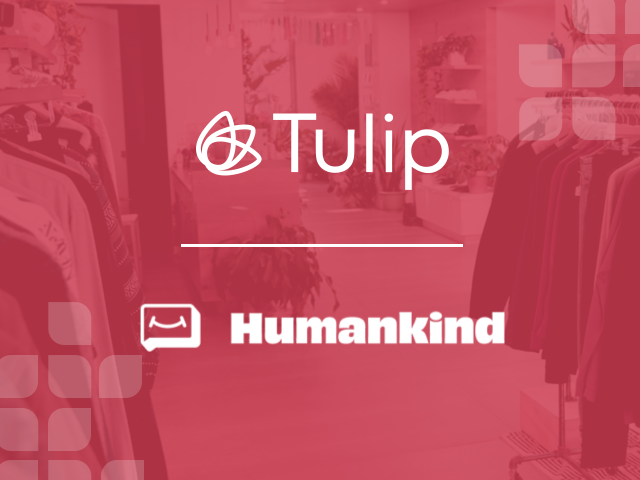How in-store technology is making retail stores as measurable as ecommerce
Historically, ecommerce websites have been far more measurable than retail stores because they generate a wealth of data that can be tracked, analyzed, and optimized in real-time. Web analytics, A/B testing, personalization, and automated marketing are just a few of the technological tools that enable the collection, processing, and analysis of vast amounts of data quickly and accurately.
By contrast, measuring the performance of physical stores has traditionally been more challenging due to the limitations of data collection and analysis. Measuring the performance of retail stores is critical to helping brands improve sales, optimize inventory, effectively allocate resources, and enhance the customer experience, which overall gives them a competitive edge in the marketplace.
However, even though retailers may be collecting in-store data, for many, that information is siloed from that of the ecommerce sites, meaning retailers only get half the picture when looking at one or the other. To make the full use of data gathered from multiple channels, retailers need a unified system that will give an accurate representation of what the metrics mean, and how to apply them.
Thanks to the advent of modern in-store technology, such as digital black books, and automated inventory management systems, it is now possible to collect more data and track customer behavior across channels in real-time, making physical stores more measurable than ever before.
Foot traffic and conversion
Undeniably, the fundamental sales driver for retail stores is foot traffic. However, in today’s retail landscape, simply reacting to in-store traffic is no longer enough.
As James Bishop, AG Jeans Director of Retail, points out: “20 years ago, when we first opened the doors, we had the luxury of being able to wait and see who was coming into our store. Today, as I’m sure every brand knows, that’s no longer the case. We know that the relationships we have with our customers are a major sales driver, so it’s important that we’re proactive and systematic about how we create and track them.”
Empowering store teams with in-store tech that enables them to reach out to customers in a systematic way not only helps them to predictably drive sales, but also provides data-driven insights that help retailers strategize how to increase conversions effectively.
Customer trends and behavior
Another key area that in-store tech helps retailers measure is customer trends and behavior. Knowing your audience is the foundation to any business. Deeply understanding their wants, needs, preferences, and drivers makes being able to deliver on those things so much easier.
Clienteling, the process of collecting, storing, and analyzing this information has widely traditionally been done via pen and paper resulting in huge binders brimming with every little detail. This can make it difficult to accurately track and locate customer information, especially when an associate leaves and takes their notes with them. Digital clienteling takes this system and optimizes it by utilizing in-store tech like tablets, iPhones, or iPads to store information and recall it at the tap of a finger, instead of requiring associates to flip through hundreds of pages.
With all the information in one place, store teams can collaborate on recording customer information and easily assess their behaviors and trends as an individual and as a whole. This can help them identify things like which products or styles perform best in which areas, what to market to which customer based on previous purchases, and even more unfavorable trends like bracketing (which is currently on the rise).
Inventory management and stock levels
In addition to recording customer data, in-store technology helps retailers track store data such as inventory levels which can help manage stock more effectively. RFID tags and sensors provide real-time updates on inventory levels, alerting store associates when stock is low or misplaced. The data collected by these solutions can help retailers optimize inventory levels and make better purchasing decisions, leading to reduced waste, lower costs, and increased profitability.
While technologies like this are great for measuring the stock currently in a store, and ordering more, they are unable to provide immediate alternatives to out-of-stock products that are plaguing retailers. The retail marketplace is still feeling the effects of the pandemic-induced supply chain issues. And so, when it comes to inventory, every item may not be available in every store, or any store. Still, customers expect to get what they came for, and 22% won’t wait for retailers to restock before they take their business elsewhere.
While an iPad unfortunately can’t magically solve supply chain issues, it can help retailers by providing an alternative solution to customers faced with out-of-stock headaches. Endless aisle solutions enable retailers to showcase their full breadth of product offerings, and get them into customers’ hands, regardless of where the inventory is located. Having a localized catalog with a list of alternate locations (including ecommerce) that have stock gives customers the assurance that they will get what they need while also broadening the horizon of associates by enabling cross-channel selling.
Bringing it all together
In-store retail technology has revolutionized the way retailers measure the performance of their physical stores. By collecting and tracking data more effectively, physical stores can now be just as measurable as ecommerce websites. With the right tools retailers can empower their store teams with the data-driven insights to strategically drive sales, optimize inventory, and ultimately, gain a competitive edge in the marketplace.
Ready to unlock the potential of your stores? Contact us today to see how modern solutions can transform your business.

